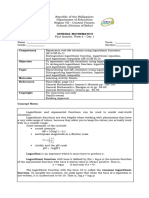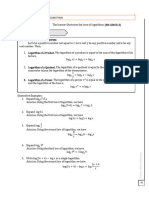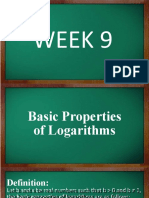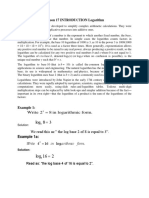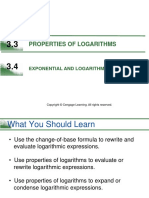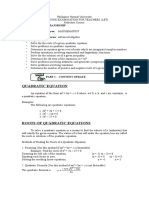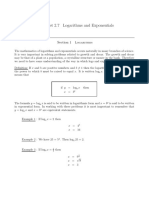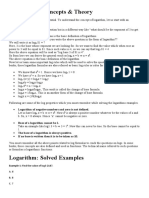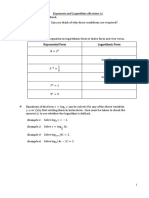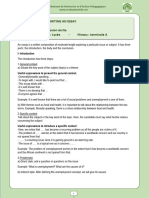100% found this document useful (1 vote)
1K views3 pagesDetermine Whether The Given Is A Logarithmic Function
1. The document discusses the basic properties of logarithms including: logarithmic functions, equations, and inequalities. It also covers laws of logarithms such as log(uv)=logu + logv.
2. Examples are provided to illustrate using properties of logarithms to simplify expressions, expand logarithms, and change logarithmic bases.
3. A quiz is included with problems testing the application of logarithmic properties, including expanding, condensing, and changing logarithmic bases.
Uploaded by
Shehonny Villanueva-BayabanCopyright
© © All Rights Reserved
We take content rights seriously. If you suspect this is your content, claim it here.
Available Formats
Download as DOCX, PDF, TXT or read online on Scribd
100% found this document useful (1 vote)
1K views3 pagesDetermine Whether The Given Is A Logarithmic Function
1. The document discusses the basic properties of logarithms including: logarithmic functions, equations, and inequalities. It also covers laws of logarithms such as log(uv)=logu + logv.
2. Examples are provided to illustrate using properties of logarithms to simplify expressions, expand logarithms, and change logarithmic bases.
3. A quiz is included with problems testing the application of logarithmic properties, including expanding, condensing, and changing logarithmic bases.
Uploaded by
Shehonny Villanueva-BayabanCopyright
© © All Rights Reserved
We take content rights seriously. If you suspect this is your content, claim it here.
Available Formats
Download as DOCX, PDF, TXT or read online on Scribd
/ 3





